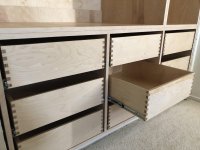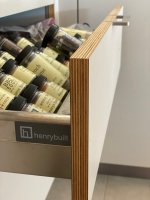Bugsysiegals
Member
- Joined
- Mar 19, 2016
- Messages
- 909
I bought several sheets of Birch plywood to make drawer boxes for several shop cabinets. I'll eventually move onto kitchen cabinets and wonder whether you all use plywood with edge banding or hardwood for your cabinet drawer boxes? If plywood, what edge banding do you recommend?


